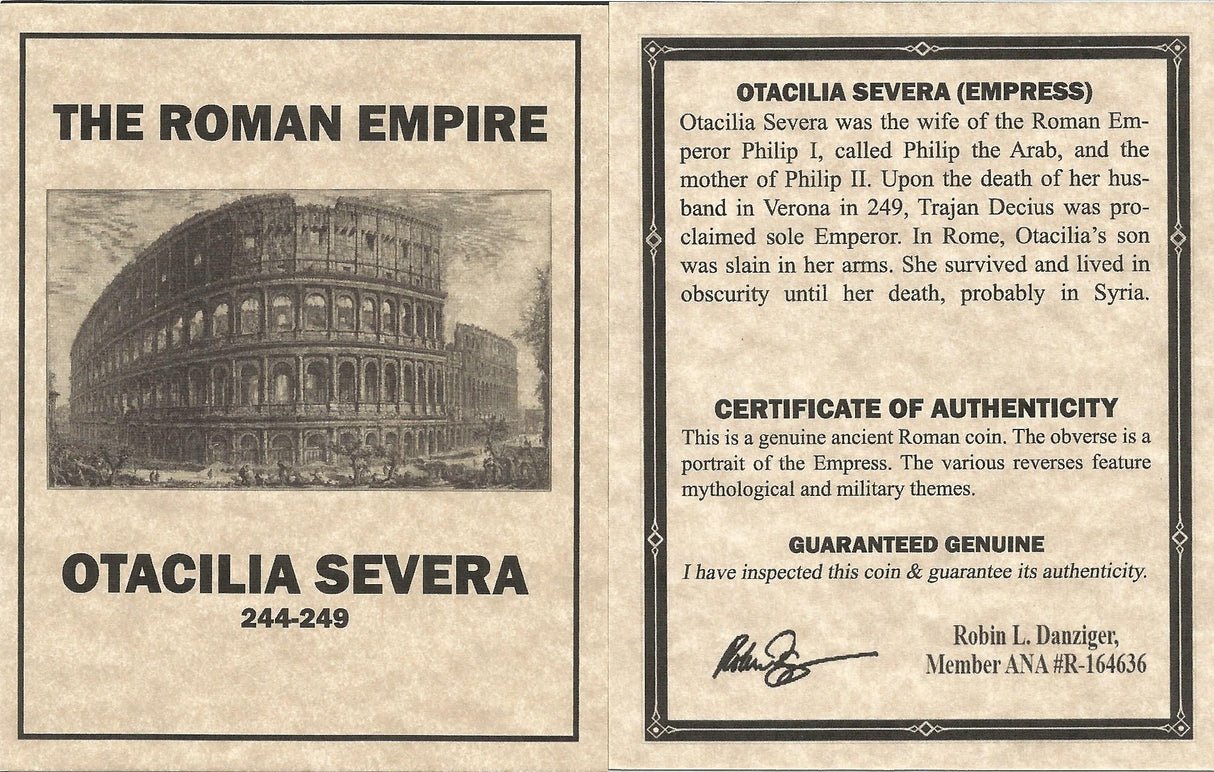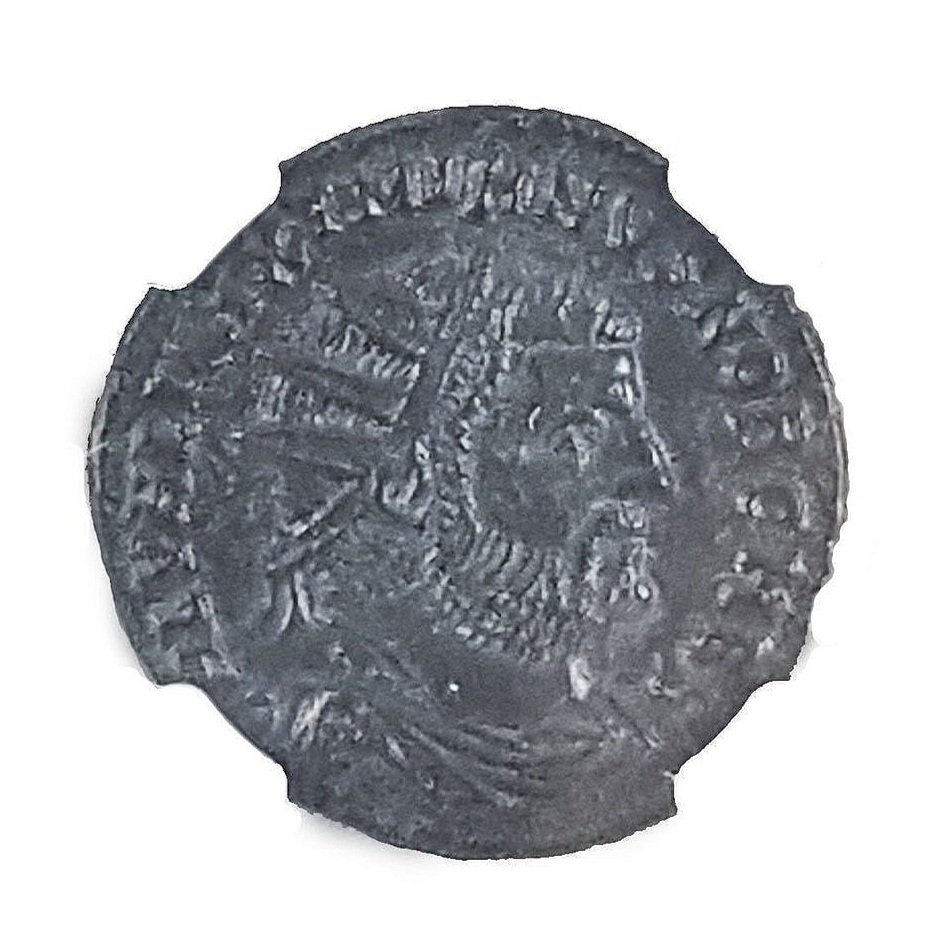 Image 1 of 3
Image 1 of 3

 Image 2 of 3
Image 2 of 3

 Image 3 of 3
Image 3 of 3




Roman Bronze Coin of Emperor Julian II (about 1,660-1,665 years ago)
Roman AE Of Julian II (As Caesar) (AD 361-363)
Roman Bronze Coin of Emperor Julian II (about 1,660-1,665 years ago)
This bronze coin was issued during the brief reign of Julian II, known to history as "Julian the Apostate," the last non-Christian emperor of Rome. A philosophical ruler whose rejection of Christianity in favor of traditional Roman religious practices earned him his pejorative nickname from Christian writers, Julian represents a fascinating counter-current to the Christianization of the late Roman Empire during the 4th century.
Coin Description:
Front side: Portrait of Julian II facing right, typically bearded (unusual for the period but reflecting his philosophical leanings), with Latin inscription giving his name and titles
Back side: Likely depicts traditional Roman religious imagery, military symbols, or personifications that aligned with Julian's Neo-Platonic and pagan beliefs
Technical Details:
Bronze composition
Denomination: AE3 or similar late Roman bronze denomination
NGC certified
Minted between 361-363 AD
Condition as certified by NGC
Historical Significance: Julian II was the last pagan emperor of Rome, whose brief reign represented the final attempt to reverse the Christianization of the empire initiated by his uncle Constantine the Great. Raised Christian but secretly converting to traditional Roman religion, Julian implemented religious tolerance policies upon becoming emperor that favored paganism. A highly educated philosopher-emperor in the tradition of Marcus Aurelius, Julian wrote extensive philosophical works still studied today. His religious policies and military campaign against Persia (modern Iran) were cut short by his death in battle in 363 AD after just 18 months as emperor, permanently ending attempts to restore traditional Roman religion as the empire's official faith.
Roman AE Of Julian II (As Caesar) (AD 361-363)
Roman Bronze Coin of Emperor Julian II (about 1,660-1,665 years ago)
This bronze coin was issued during the brief reign of Julian II, known to history as "Julian the Apostate," the last non-Christian emperor of Rome. A philosophical ruler whose rejection of Christianity in favor of traditional Roman religious practices earned him his pejorative nickname from Christian writers, Julian represents a fascinating counter-current to the Christianization of the late Roman Empire during the 4th century.
Coin Description:
Front side: Portrait of Julian II facing right, typically bearded (unusual for the period but reflecting his philosophical leanings), with Latin inscription giving his name and titles
Back side: Likely depicts traditional Roman religious imagery, military symbols, or personifications that aligned with Julian's Neo-Platonic and pagan beliefs
Technical Details:
Bronze composition
Denomination: AE3 or similar late Roman bronze denomination
NGC certified
Minted between 361-363 AD
Condition as certified by NGC
Historical Significance: Julian II was the last pagan emperor of Rome, whose brief reign represented the final attempt to reverse the Christianization of the empire initiated by his uncle Constantine the Great. Raised Christian but secretly converting to traditional Roman religion, Julian implemented religious tolerance policies upon becoming emperor that favored paganism. A highly educated philosopher-emperor in the tradition of Marcus Aurelius, Julian wrote extensive philosophical works still studied today. His religious policies and military campaign against Persia (modern Iran) were cut short by his death in battle in 363 AD after just 18 months as emperor, permanently ending attempts to restore traditional Roman religion as the empire's official faith.
Roman AE Of Julian II (As Caesar) (AD 361-363)
Roman Bronze Coin of Emperor Julian II (about 1,660-1,665 years ago)
This bronze coin was issued during the brief reign of Julian II, known to history as "Julian the Apostate," the last non-Christian emperor of Rome. A philosophical ruler whose rejection of Christianity in favor of traditional Roman religious practices earned him his pejorative nickname from Christian writers, Julian represents a fascinating counter-current to the Christianization of the late Roman Empire during the 4th century.
Coin Description:
Front side: Portrait of Julian II facing right, typically bearded (unusual for the period but reflecting his philosophical leanings), with Latin inscription giving his name and titles
Back side: Likely depicts traditional Roman religious imagery, military symbols, or personifications that aligned with Julian's Neo-Platonic and pagan beliefs
Technical Details:
Bronze composition
Denomination: AE3 or similar late Roman bronze denomination
NGC certified
Minted between 361-363 AD
Condition as certified by NGC
Historical Significance: Julian II was the last pagan emperor of Rome, whose brief reign represented the final attempt to reverse the Christianization of the empire initiated by his uncle Constantine the Great. Raised Christian but secretly converting to traditional Roman religion, Julian implemented religious tolerance policies upon becoming emperor that favored paganism. A highly educated philosopher-emperor in the tradition of Marcus Aurelius, Julian wrote extensive philosophical works still studied today. His religious policies and military campaign against Persia (modern Iran) were cut short by his death in battle in 363 AD after just 18 months as emperor, permanently ending attempts to restore traditional Roman religion as the empire's official faith.
Julian[i] (Latin: Flavius Claudius Julianus; Ancient Greek: Ἰουλιανός Ioulianos; 331 – 26 June 363) was the Caesar of the West from 355 to 360 and Roman emperor from 361 to 363, as well as a notable philosopher and author in Greek. His rejection of Christianity, and his promotion of Neoplatonic Hellenism in its place, caused him to be remembered as Julian the Apostate in Christian tradition. He is sometimes referred to as Julian the Philosopher.[4]
A nephew of Constantine the Great, Julian was one of few in the imperial family to survive the purges and civil wars during the reign of Constantius II, his cousin. Julian became an orphan as a child after his father was executed in 337, and spent much of his life under Constantius's close supervision. However, the emperor allowed Julian to pursue freely an education in the Greek-speaking east, with the result that Julian became unusually cultured for an emperor of his time. In 355, Constantius II summoned Julian to court and appointed him to rule Gaul. Despite his inexperience, Julian showed unexpected success in his new capacity, defeating and counterattacking Germanic raids across the Rhine and encouraging the ravaged provinces' return to prosperity. In 360, he was proclaimed emperor by his soldiers at Lutetia (Paris), sparking a civil war with Constantius. However, Constantius died before the two could face each other in battle, having allegedly named Julian as his successor.






















